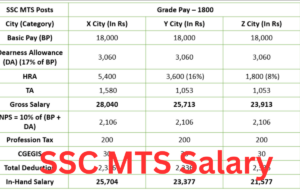Table of Contents
The COVID-19 pandemic, which began in 2019, continues to evolve as new subvariants of the virus emerge. In 2025, multiple subvariants have been identified globally, including in India, raising concerns over increased transmissibility and changes in symptoms. Understanding the history, list of known subvariants, and other crucial details is essential for effective prevention and management.
In this article, we explore the timeline of COVID Sub Variants, the list of the most recent subvariants in 2025, symptoms, and what you need to know about staying safe.
What Are COVID-19 Sub-Variants?
COVID Sub Variants are offspring of the original SARS-CoV-2 virus‘s genetic material. As the virus reproduces, it mutates, and sometimes becomes different sub variants which may spread easier or may cause different symptoms. Global medical organizations, like the WHO, can track these variants and subvariants carefully to gauge their effects on public health.
A Brief History of COVID-19 Variants
Since the first outbreak in Wuhan, China in late 2019, the SARS-CoV-2 virus has gone through thousands of mutations. Some of these led to Variants of Concern (VOCs), which include:
| Year | Variant | Origin | Key Features |
|---|---|---|---|
| 2020 | Alpha (B.1.1.7) | UK | More transmissible |
| 2021 | Delta (B.1.617.2) | India | High mortality & rapid spread |
| 2022 | Omicron (B.1.1.529) | South Africa | Highly contagious, milder symptoms |
| 2023 | XBB.1.5, EG.5, BA.2.86 (Pirola) | Global | Evolved immune escape |
| 2024 | JN.1 (subvariant of Pirola) | Luxembourg | High community transmission |
Key COVID-19 Sub-Variants in 2025
In 2025, there are several different subvariants of COVID-19, each with unique properties, rates of transmission, and illness manifestations. While the severity of illness from these new subvariants is still much lower than Delta, the increased incidence of COVID-19 infections caused by JN.1, NB.1.8.1, and LF.7 has led to renewed health surveillance. It is important to know the differences between the various sub-variants for effective disease surveillance and overall response. Check out the table below for the major subvariants (now being detected in India and elsewhere worldwide).
| Variant Name | Parent Variant | First Detected | Geographic Spread | Key Symptoms | Severity | Notes |
|---|---|---|---|---|---|---|
| JN.1 | Omicron (BA.2.86 – Pirola) | Late 2023 (Europe) | Global, including India | Mild fever, dry cough, sore throat, fatigue | Mild | Dominant variant in early 2025 |
| NB.1.8.1 | JN.1 Sublineage | April 2025 (Tamil Nadu, India) | Southern India | Sore throat, headache, and nasal congestion | Mild | Under ICMR surveillance |
| LF.7 | Unclassified Omicron Lineage | May 2025 (Gujarat, India) | Isolated cases in Gujarat | Mild fever, respiratory irritation | Mild | Limited transmission so far |
| XBB.1.5 | Omicron Recombinant | 2023 | Previously dominant globally | Runny nose, fatigue, and muscle pain | Mild | Largely replaced by JN.1 in 2025 |
| BA.2.86 (Pirola) | Omicron | Late 2022 | Europe, North America | Fever, cough, fatigue | Mild to moderate | Precursor to JN.1 |
List of COVID-19 Sub-Variants in 2025
JN.1 (Omicron sublineage)
-
Detected: Late 2023, globally dominant by early 2025
-
Notable Features: Derived from BA.2.86 (Pirola); higher transmissibility
-
Symptoms:
-
Mild fever
-
Fatigue
-
Nausea
-
Diarrhea
-
Sore throat
-
Dry cough
-
NB.1.8.1
-
Detected: Tamil Nadu, India (April 2025)
-
Spread: Southern India
-
Symptoms: Similar to JN.1, often includes sore throat and sinus congestion
LF.7
-
Detected: Gujarat, India (May 2025)
-
Cases: Limited
-
Symptoms: Headache, mild fever, respiratory irritation
Geographic Spread in India
As of May 2025, these sub variants are active in:
-
Kerala: Highest number of JN.1 infections
-
Tamil Nadu: NB.1.8.1 variant spreading
-
Maharashtra & Delhi: Rising COVID positivity rate
-
Gujarat: LF.7 cases under surveillance
-
Karnataka & Andhra Pradesh: Mild clusters
India’s Union Health Ministry has issued alerts for states reporting higher test positivity.
Symptoms of 2025 COVID-19 Sub-Variants
While symptoms vary slightly by subvariant, the most common signs reported include:
-
Mild fever (not exceeding 100.5°F)
-
Dry or sore throat
-
Headache
-
Nausea or vomiting
-
Muscle and body aches
-
Diarrhea or abdominal discomfort
-
Persistent fatigue
Unique Symptom of JN.1: Mild but persistent fever without chills — a deviation from classic COVID symptoms.
Vaccination & Immunity Status
Despite new subvariants, current vaccines and boosters continue to offer strong protection:
-
Protection Against Severe Illness: High
-
Breakthrough Infections: Mild/moderate
-
Booster Dose Recommended: Especially for the elderly, immunocompromised, and healthcare workers
India has begun rolling out variant-specific boosters in select high-risk zones.
WHO and Government Advisory
-
Testing Protocols: RT-PCR remains effective for detection.
-
Travel Guidelines: Screening reintroduced at international airports.
-
Mask Advisory: Use masks in crowded or poorly ventilated areas.
-
Isolation Norms: Mild cases advised home isolation for 7 days.
How These Variants Differ from Previous Ones
| Feature | Delta | Omicron | JN.1 (2025) |
|---|---|---|---|
| Fever | High (with chills) | Mild | Mild, persistent |
| Cough | Dry or productive | Mostly dry | Dry, less severe |
| Gastro symptoms | Rare | Common | More frequent |
| Hospitalization | High | Low | Very low |


 SSC MTS Salary 2025, Check Highest Salar...
SSC MTS Salary 2025, Check Highest Salar...
 F-35 Fighter Jet Stranded in Kerala: Dis...
F-35 Fighter Jet Stranded in Kerala: Dis...
 List of Awards and Honours Received by N...
List of Awards and Honours Received by N...





















